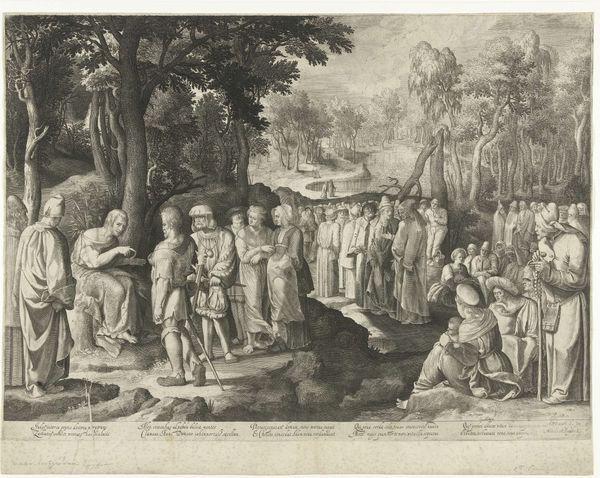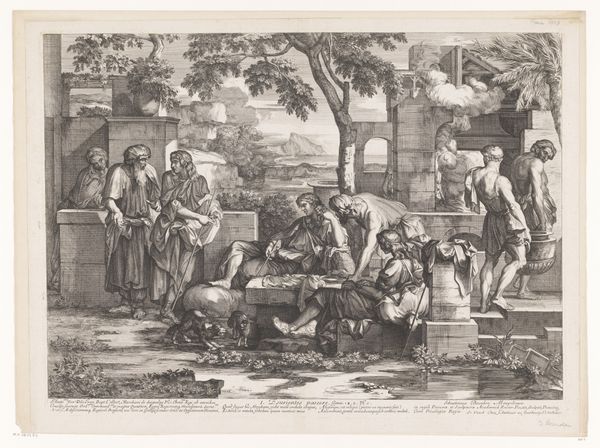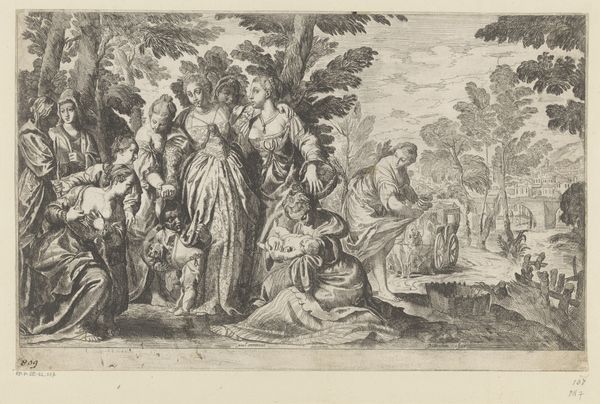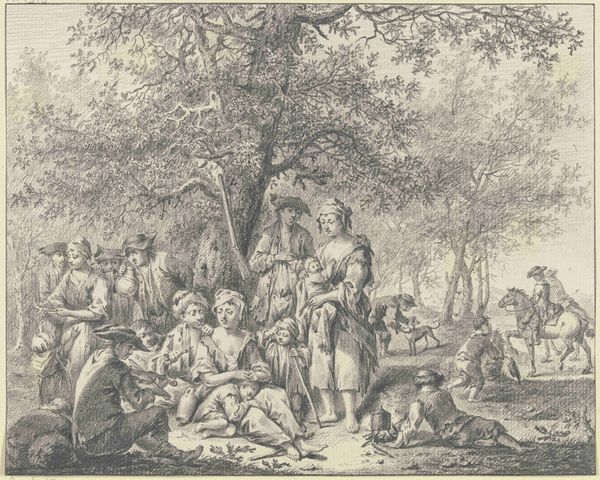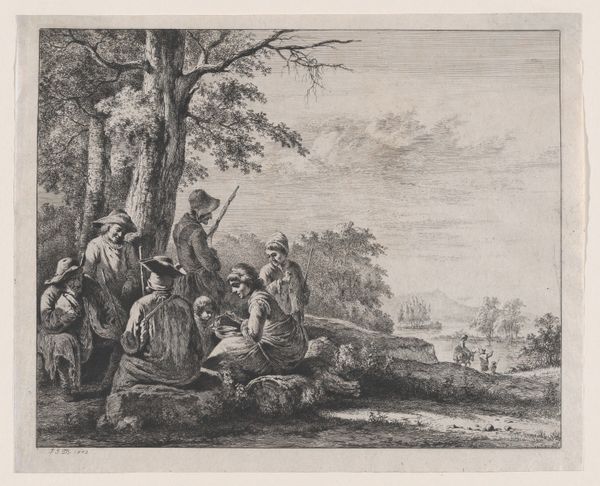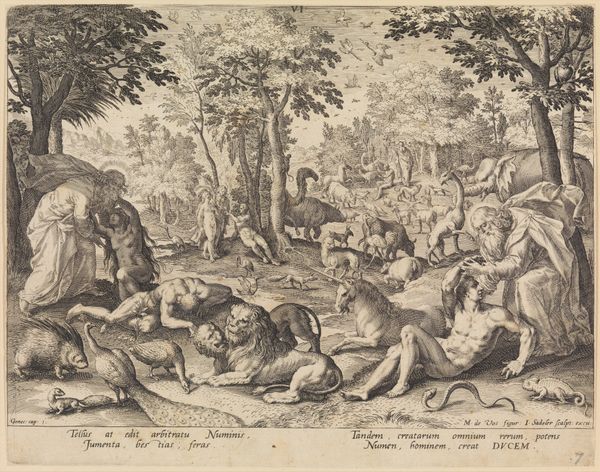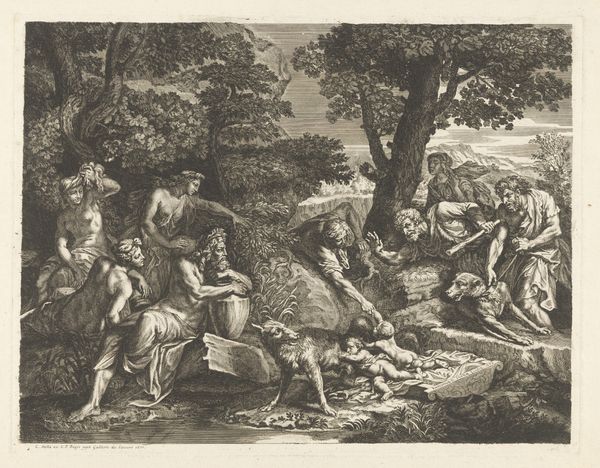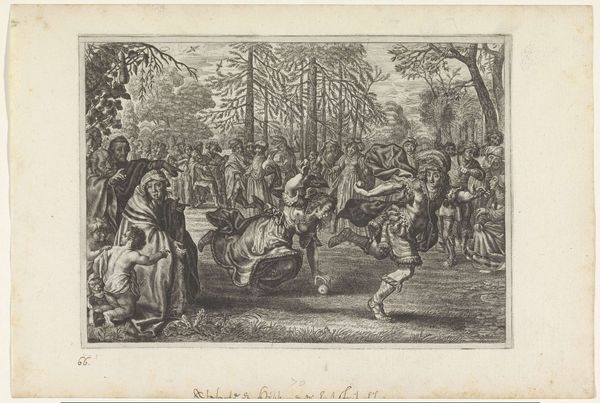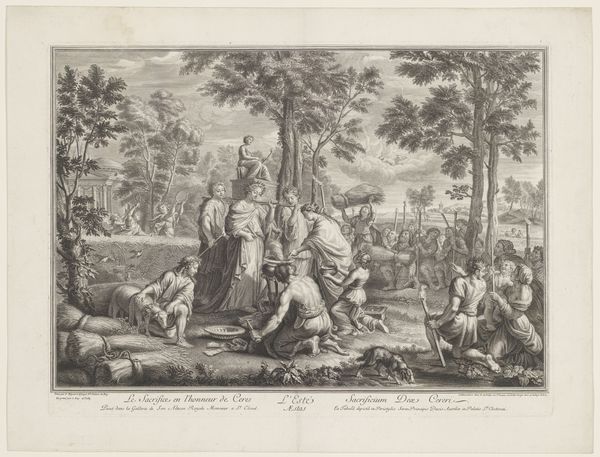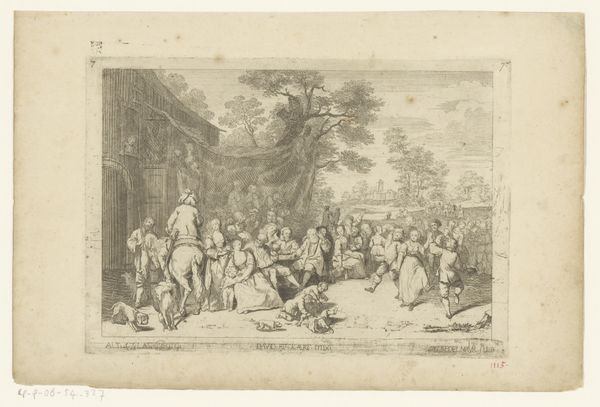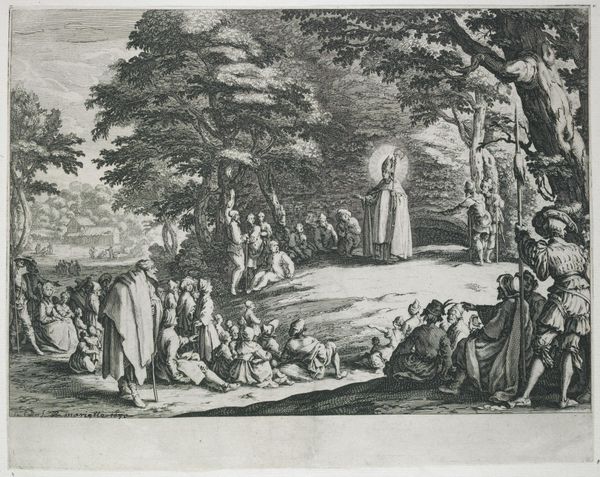
John the Baptist Preaching in the Desert 1522 - 1533
0:00
0:00
drawing, print, engraving
#
drawing
#
narrative-art
# print
#
landscape
#
figuration
#
11_renaissance
#
northern-renaissance
#
engraving
Dimensions: sheet: 15 1/2 x 21 1/2 in. (39.4 x 54.6 cm)
Copyright: Public Domain
Editor: This is "John the Baptist Preaching in the Desert," an engraving by Nicolaes de Bruyn from the early 16th century. It’s so detailed; it almost feels cinematic in its scope, like a wide shot from a film. How do you interpret this work within the social context of the time? Curator: It's crucial to consider how this image functioned within the religious and political landscape of the Northern Renaissance. The Reformation was gaining momentum, and imagery played a crucial role in shaping public opinion. How do you think de Bruyn's depiction of John the Baptist resonated with audiences experiencing religious upheaval? Editor: Well, depicting John the Baptist in a natural landscape instead of, say, a grand cathedral, feels like a conscious choice to emphasize a more direct connection with God, away from the established Church. Curator: Precisely! And note the varied reactions of the crowd. Some are deeply engaged, others seem skeptical or even bored. De Bruyn isn't presenting a unified religious experience, is he? He presents individuals in a multitude of mental states that were acceptable to express at this time of transformation. Editor: I hadn’t noticed that initially, I was so caught up in the landscape! So the print isn't just illustrating a biblical scene but also commenting on the diverse religious attitudes circulating at the time? Curator: Absolutely. Consider the role of printmaking itself. It was a relatively new medium, enabling wider dissemination of images and ideas. "John the Baptist Preaching in the Desert" would have contributed to ongoing dialogues about religious authority and personal faith. It challenges the power structures with John taking centre stage. Editor: I see it now! This artwork provides much more insight into the social discourse around the Renaissance than I initially thought. Thanks for that breakdown. Curator: My pleasure! Analyzing art within its historical context allows us to understand not just the artist's intentions but also how the work actively shaped the cultural conversation of its time.
Comments
No comments
Be the first to comment and join the conversation on the ultimate creative platform.
